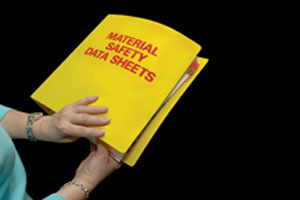 One of the challenges of working with small companies is addressing the concept of a food defense program. The subject often elicits that “deer in the headlights” look. The concepts of food safety, quality and sanitation are things most processors realize are necessary, but food defense is another issue.
One of the challenges of working with small companies is addressing the concept of a food defense program. The subject often elicits that “deer in the headlights” look. The concepts of food safety, quality and sanitation are things most processors realize are necessary, but food defense is another issue.
Food defense should be a standalone program since combining food safety and defense in one program dilutes both programs. However, elements of a food processor’s overall food quality, safety and sanitation programs can be rolled into its food defense program. Crossover programs include, but are not limited to, supplier approval and vendor quality, worker education, shipping and receiving, visitor and contractor sign-in, trucker policies, water quality and maintenance, and chemical purchasing, handling and storage.
Food processors use a wide range of chemicals in their operations including cleaners and sanitizers, processing aids, lubricants, food ingredients, pesticides, paints and stains, janitorial supplies, reagents, and laboratory and specialty chemicals.
Processors must ensure these materials are properly managed and a purchasing policy is in place. For example, vendor approval should encompass more than just packaging, ingredients and raw materials. All chemicals used in a food plant also should come from approved vendors; maintenance personnel should not simply pick what they need up from the local hardware store.
Also, all chemicals coming into a plant must be stored in designated areas. Ideally, these areas should be secured and accessible only to authorized personnel. How a chemical is stored depends on its type, how often it is used and how it is used. Chemicals that are explosive or flammable should be stored in explosion-proof cabinets. Chemicals used for sanitation should be stored in a well-ventilated area and preferably on pallets that will contain spills. Processors also often install special drainage or collection systems below chemical storage areas to ensure these materials do not get into public waste streams.
Processors must store incompatible chemicals away from each other. For example, strong acids should not be kept near chlorine solutions because inadvertently mixing the two could result in the release of chlorine gas, which is extremely dangerous. Also, each chemical storage area should be clearly marked and include signage such as “AUTHORIZED PERSONNEL ONLY.” Installing hazard signs is also a good practice so staff members know what kinds of chemicals are kept in a particular area.
Within the storage area, laminated copies of the material safety data sheets (MSDSs) should be kept for each chemical stored. If an accident occurs, easy access to the information on the MSDS could be crucial when it comes to helping staff in peril.
Unlabeled chemicals are accidents waiting to happen. Consequently, all chemicals must be properly labeled. Even secondary containers used to transport or mix chemicals need a laminated label secured by a lock tie.
MSDS and worker education
Each facility should maintain a master file that includes an MSDS for each chemical, lubricant and other material currently being used, as well as a register that summarizes all the chemicals. This file should be date stamped to indicate when the list is updated. According to the “Right to Know” laws, each worker in a facility has the right to know what chemicals are used in the workplace.
The master file should be kept in an easily accessible place, such as a break area or training room. It is also a good idea to maintain satellite files in chemical storage areas and to provide the local clinic with a complete set of all MSDSs.
Once a year, the MSDS master file should be used to conduct an audit of all process operations, warehouse facilities and other areas to ensure only approved chemicals are being used in operations. If any other materials are found, they should be added to the file or taken out of service. Conversely, if a chemical is no longer used at a facility, the item can’t simply be removed from the MSDS file; the information on it must remain in the binder.
The yearly audit ensures the MSDS files are up to date and the company is in compliance with all rules and regulations governing chemicals. This is also one area third-party auditors review. Don’t be surprised if they note chemicals seen around the plant and verify they are in the MSDS files.
Finally, it is imperative that all workers, including clerical staff, receive basic training on chemical handling and storage. This training should be documented and include not only how to handle and use the different chemicals, but what personal protective equipment (PPE) is required, how this equipment must be maintained and cleaned, and how to properly use the equipment. To emphasize the importance of the PPE, pictures or icons may be incorporated into the training.
A well-designed and implemented chemical purchasing, handling and storage program helps establish a system that minimizes or prevents inadvertent or intentional contamination of a food with chemicals. And in this way, it helps protect consumers and ensure the production of safe, wholesome foods—things food processors are bound to do by law.


